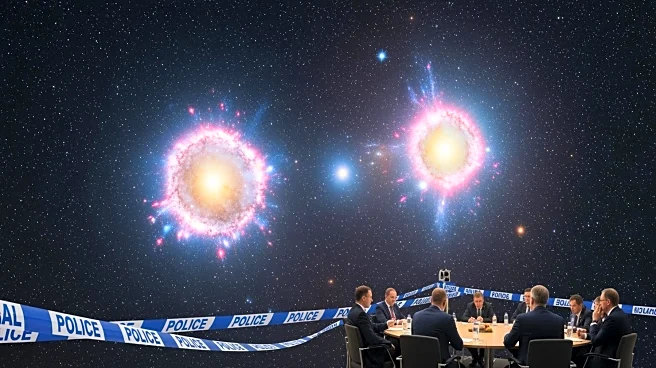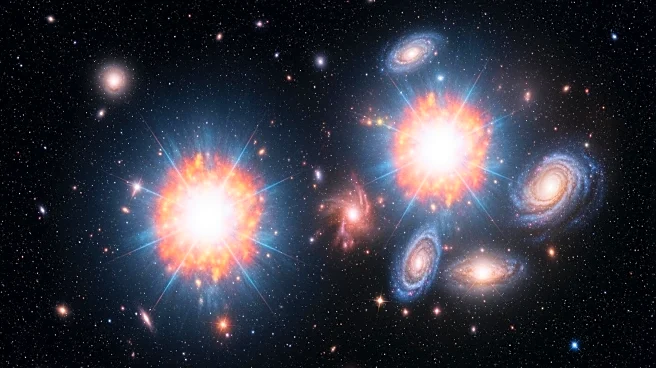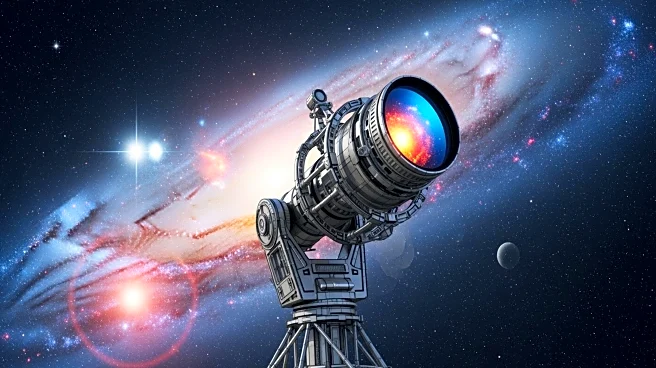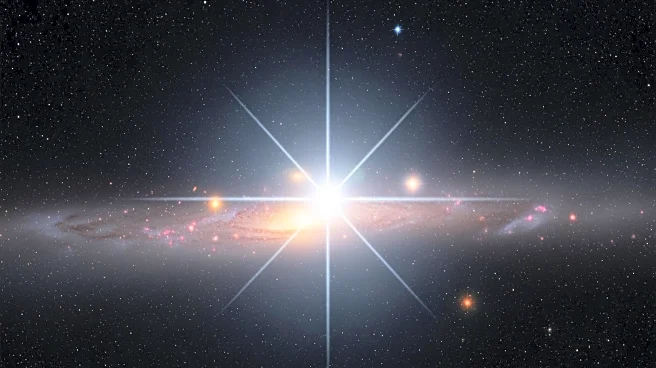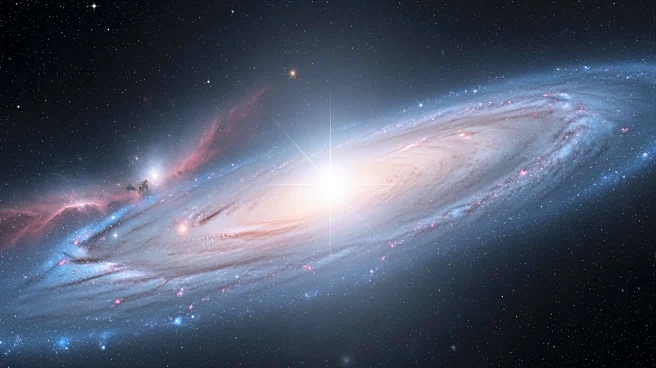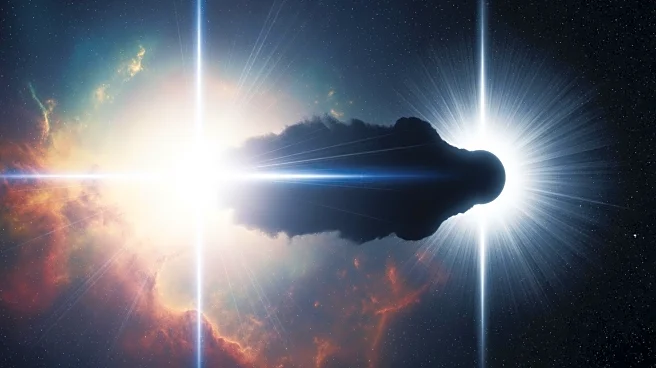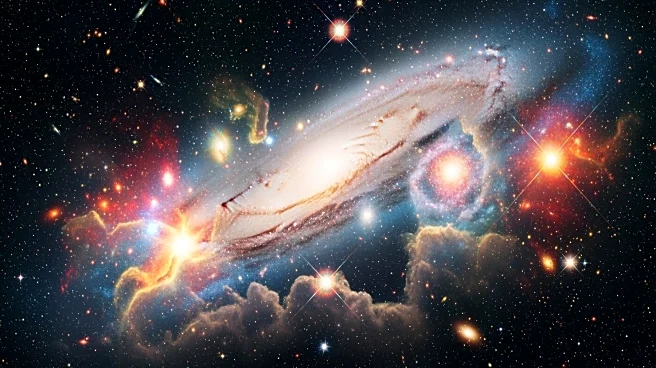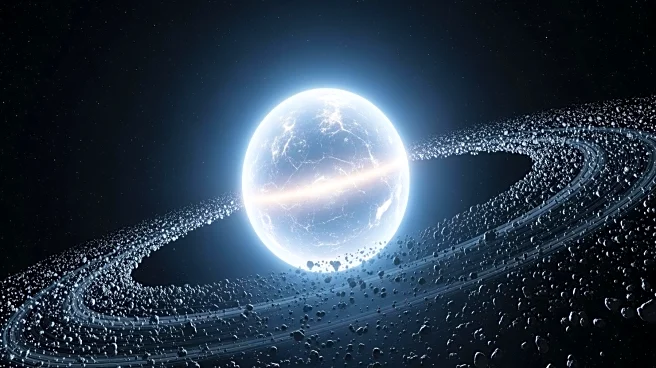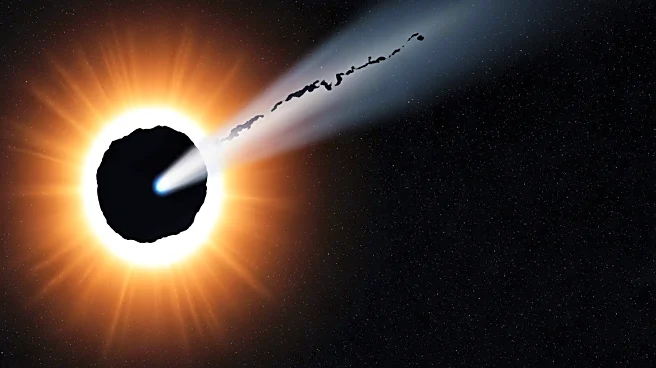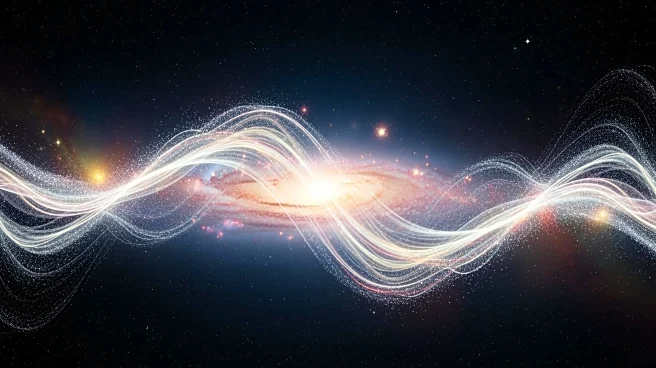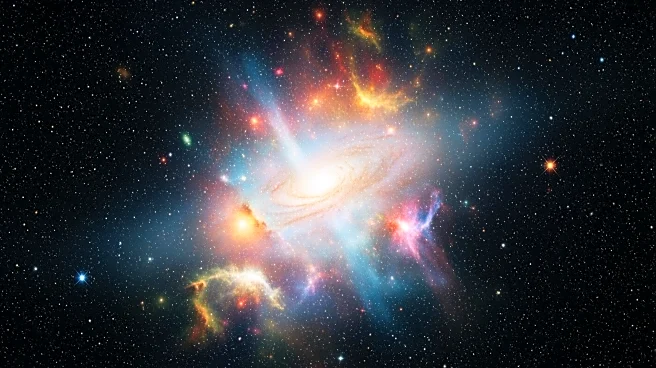What's Happening?
Astronomers have captured the first image of a star that exploded twice, a phenomenon that has been theorized but not observed with such clarity until now. The star, located in the Large Magellanic Cloud,
a nearby dwarf galaxy, left behind a remnant known as SNR 0509-67.5. This remnant displays two distinct layers of debris, indicative of a double explosion. The study, published in Nature Astronomy, reveals that the star underwent two linked detonations: one in an outer helium layer and another in the carbon-oxygen core. This discovery provides visual evidence supporting the theory that some Type Ia supernovae can occur before a white dwarf reaches the Chandrasekhar mass limit, suggesting multiple pathways to such stellar explosions.
Why It's Important?
The findings are significant as they challenge the traditional understanding of Type Ia supernovae, which are crucial for measuring cosmic distances due to their predictable brightness. The discovery of a double detonation mechanism implies that there are multiple ways these supernovae can occur, which could affect the calibration of cosmic distance measurements. This has broader implications for our understanding of the universe's expansion and the chemical composition of space. By providing a clearer picture of the explosion mechanisms, the study enhances the accuracy of models used to interpret astronomical data, potentially leading to more precise measurements of the universe's expansion rate.
What's Next?
Future research will focus on identifying similar calcium-sulfur patterns in other young supernova remnants to determine how common this double detonation pathway is. This will help refine models of supernovae and improve the standardization of these events as cosmic distance markers. Additionally, advancements in three-dimensional radiative transfer models will aim to connect ejecta maps to observed colors, further enhancing the precision of distance measurements. As more data is collected, the understanding of supernovae diversity will improve, strengthening the cosmic distance ladder and providing deeper insights into the universe's structure and evolution.
Beyond the Headlines
The study highlights the complexity of stellar explosions and the need for diverse models to account for different supernovae pathways. This research underscores the importance of spatial mapping in resolving ambiguities that spectral data alone cannot address. By confirming the existence of a double detonation mechanism, the study opens new avenues for exploring the role of companion stars and other factors in supernovae diversity. This could lead to a more nuanced understanding of the life cycles of stars and the processes that govern their explosive ends.
